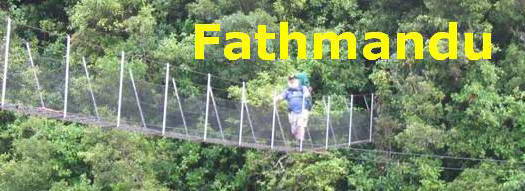The Okura Walkway 1
Haigh's Access to Beach
(page 3)
Once we reach the top of the first long climb, we head along a ridge above the Okura Estuary and the path climbs and descends and climbs and descends on a regular basis, for the most part flat, broad and in many places with a gravel surface.
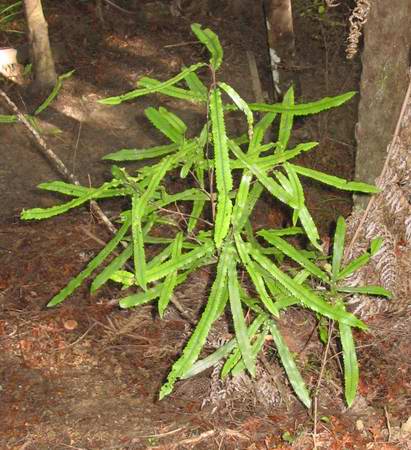
Here's a young rewarewa,
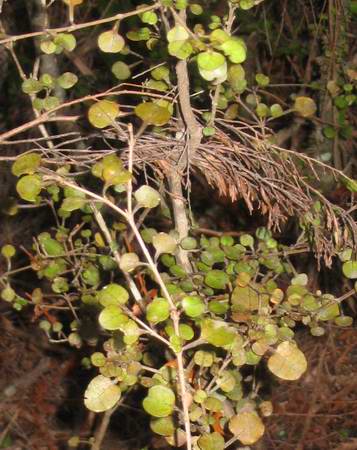
and this is possibly Coprosma arborea, though the rounded and at times indented tips suggest it could be C. spathulata. There is a slight heaviness about the leaves which also encourages this belief, but I'd need a magnifying lens to confirm identification.
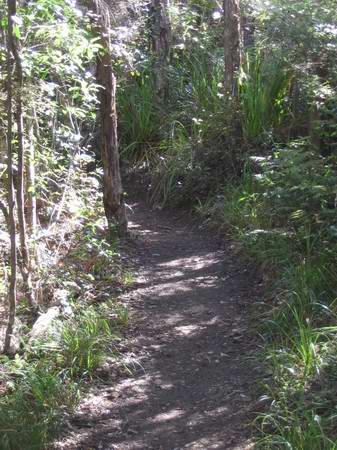
The track continues, for the most part still well-behaved. The occasional wet patch is hardly muddy. The step-meister is gradually building towards his piece de resistance.
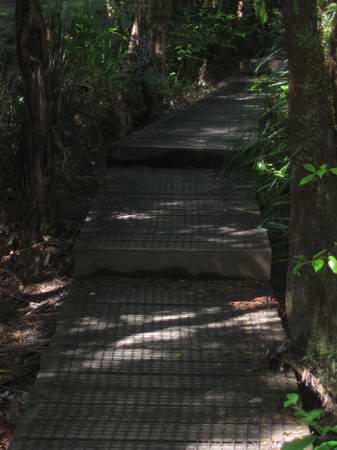
and here it is:
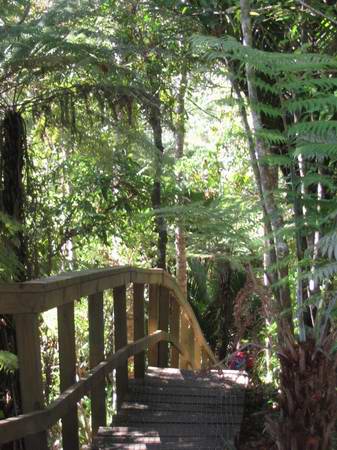
We must be outside the Rodney District Council area that specifies no horizontals and vertical rails spaced no more than 100mm between - though it might be argued that toddlers are unlikely to venture this far.
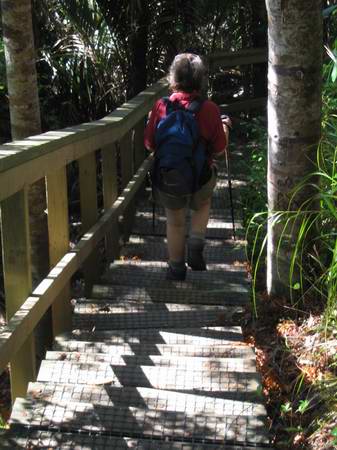
How many pine trees died to make this possible?
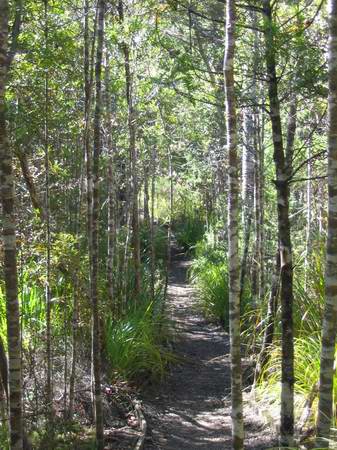
Along the top of the ridge is a host of young kauri and the occasional whopper. One of the things I appreciate about bushwalking is the constant change in the quality of the light as the primary vegetation changes.
I note that even around the bigger kauri there are no boardwalks such as proliferate at many other sites to protect the roots from passing fat people.
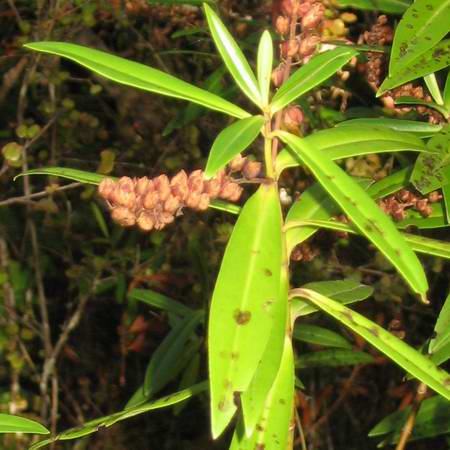
Here's a koromiko, it's flowers dead,
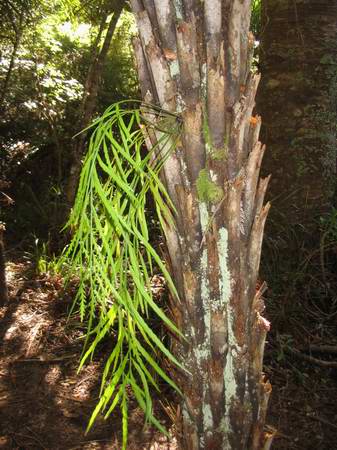
and here's a fern I haven't identified yet, possibly an Asplenium, making use of a niche in a punga trunk.
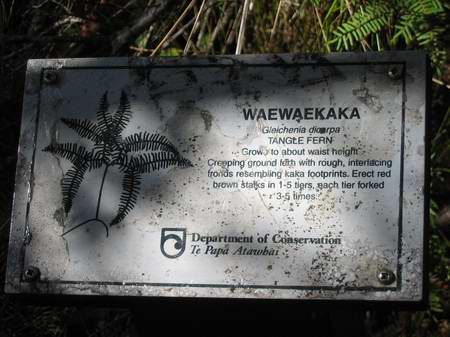
A DOC label gives me another botany lesson. This fern is most common in open scrubby bush where the doing is on the hard side.
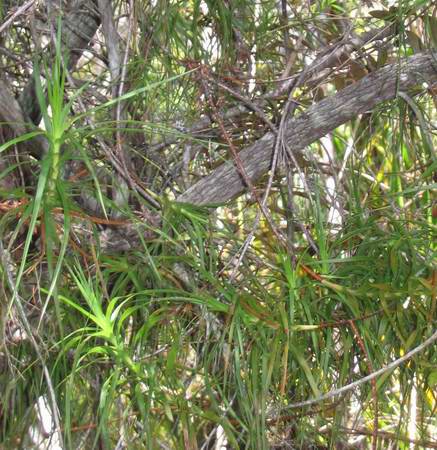
and here is a Dracophyllum sinclairii, or grass tree, which for years we have called the Dr Seuss tree. The track continues as before, up
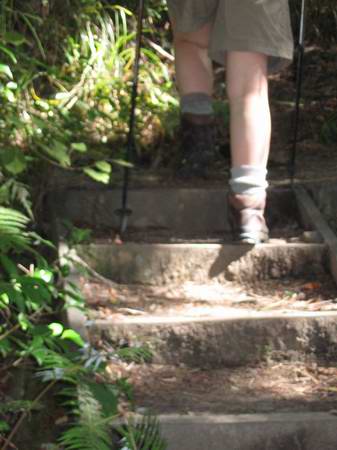
and down
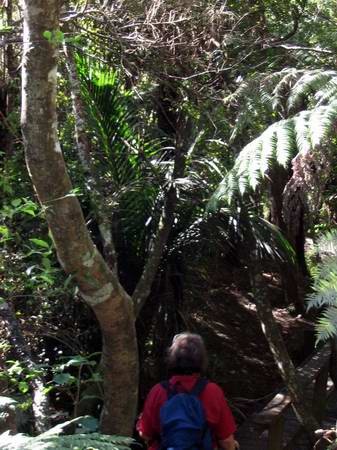
I think this is a young kamahi, the key being the pinnate leaves and the irregular serrations on the leaves, though it could be towai, another species of the same genus, Weinmannia. Usually the Bombays are taken as the boundary between the two, but the Auckland isthmus is something of an overlap area.
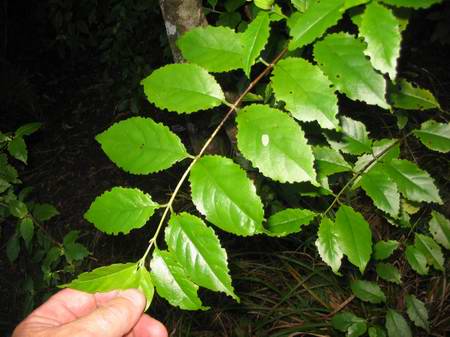
As on most tracks we depend on DoC to keep the track clear, and this must have been quite a job a year or two back.
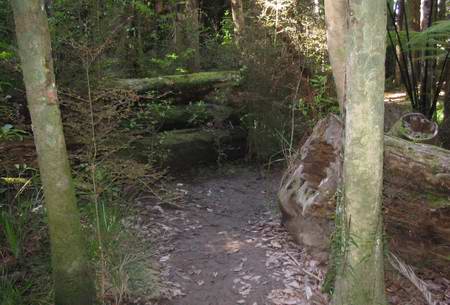
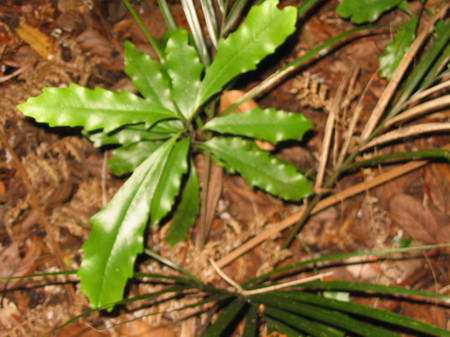
A young Alseuosmia macrophyllum: the DoC label refers to it as Bush Daphne, but I've never heard this term used. The Maori name is karapapa. Speaking of DoC labels there is one referring to Metrosideros robusta, when the only rata in sight is indisputably M. perforata.
A couple of ladies pass and one of them says, "She's waiting for you, about ten minutes along." The question for me around about now is whether she has the kettle on.
